




In Australia 7.6 million tonnes of food is wasted every year. Over 70% of it is still perfectly edible!
Bunzl and OzHarvest have partnered together to become part of the solution. With every carton of Sustain OzHarvest Collection cups purchased, two meals will be supplied to those in need.

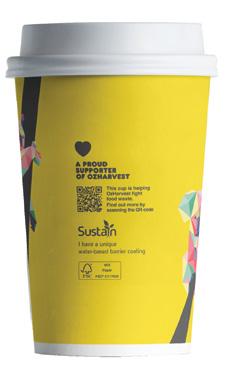
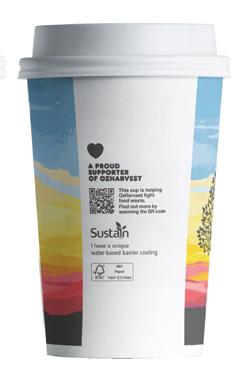
Made from renewable paper that is compostable after-use, you can help contribute to a more sustainable future and do your part in the fight against waste.
Because everybody deserves access to quality nutritious food. The solution is in your hands.
It’s been three years since we started producing Flair magazine, and much has shifted in that time. In response, we have evolved the publication to suit the adjusted landscape we all work in. We hope the new extended format allows us to cover more of the topics you asked for, while keeping all your favourite segments.
In this edition, we look at the world of robotics, and how this innovation is being used in today’s cleaning and hygiene sector. The potential is fascinating (pg 18). Pristine’s new washroom paper range, Premium Plus (pg 7), utilises technological advances to improve what currently exists. And, with labour shortages on everyone’s mind, your answer may be found with timesaving kitchen equipment (pg 6) or in the consistent application of cleaning chemical doses (pg 22).
Find the best knife for your meat prep (pg 24), get onboard with the renaissance of the paper bag (pg 26) and read about the huge global rise of craft beer (pg 16).
As individuals and businesses, we are very aware of our global footprint. We delve into the new APCO pledge (pg 5), to the latest on single-use-plastics and the waste hierarchy guidelines (pg 12) for sustainable waste management.

Keeping on theme, we also look at the United Nations Sustainable Development Goals (pg 8). This is something that Ronni Kahn AO, CEO of OzHarvest, is passionate about, and is integral to the partnership Bunzl has developed with this NFP (pg 30). Sustain’s new OzHarvest Coffee Cup Collection was created for a more sustainable future, and we hear from Bunzl’s own Vanessa Wee on how her career trajectory landed her in this space (pg 31).
Finally, the Clontarf Foundation donated a beautiful artwork to our Perth office that’s rich in cultural symbolism and spirit (pg 4). It really is something very special.
4 Spotlight: Sustainability
6 The Process: Prep Partners
7
Check Out: Helping Hands
A look at how brands can get on board with the United Nations Sustainable Development Goals.
Find out what the preferable wastemanagement solutions are for your business.
16 Craft Work Cheers to the rising trend of craft beer in Australia and New Zealand.
18 Clean Machines
Learn about how the robot takeover is helping the cleaning industry.
22
Discover smart ways to support your cleaning staff with a reliable product.
24
How the right knife can make your job in the kitchen a seamless and safe one.
Read how the humble paper bag is making a resurgence in the face of the single-use plastics ban.
Be inspired by OzHarvest founder and CEO Ronni Kahn AO as she shares her sustainable leadership tips.

31
With Bunzl’s Vanessa Wee.

A new artwork by WA students is lighting up Bunzl’s Jandakot offices.
INDIGENOUS ARTWORKS often hold vital cultural and social significance. Now, staff and visitors at Bunzl’s offices in Jandakot, WA, can get an insight into that significance thanks to a vibrant new artwork produced by local students.
The painting, created by participants of the Clontarf Foundation – a not-for-profit organisation dedicated to supporting the development of Indigenous men – is rich in cultural symbolism. A river flows through the heart of the artwork, representing the replenishment of the land; water
Bans continue to be rolled out across Australia and New Zealand. For information on how Bunzl can assist its customers in product transitions, contact our sustainability team at sustainability@bunzl.com.au
is an integral part of the landscape for Aboriginal and Torres Strait Islander peoples. Knowledge of water sources is critical, particularly for families living in desert regions. It points to where animals can be found and when native plants will bear fruit and nuts.
Among the striking colours are bursts of blue depicting men and women seated around a fireplace to symbolise community spirit, while handprints reflect the Clontarf students’ expressions of what Indigenous culture means to them.

Bunzl is a national sponsor of the Clontarf Foundation, which is based at Cecil Andrews College, Perth and runs 139 academies around the country to “improve the education, discipline, life skills, self-esteem and employment prospects of young Aboriginal and Torres Strait Islander men”.
Since its beginnings in 2000, the Clontarf Foundation has grown to upwards of 10,000 participants. Bunzl is proud to support the Clontarf Foundation, and grateful to exhibit the artwork, a symbol of the continued partnership.

The Australian Packaging Covenant Organisation’s (APCO) Recycled Materials Pledge is a timely call for brands to transition away from using virgin and single-use materials.
WHEN IT COMES to taking action for sustainability, there’s no time like the present. Which is why APCO is calling on businesses to commit to transitioning over to using recycled materials in their packaging.
APCO has created the Recycled Materials Pledge and is seeking uptake from major brands. The pledge asks APCO members to publicly commit to assessing the volumes of specific materials they utilise as they move across to using more recycled materials by 2025.

This is ahead of the deadline for the National Packaging Targets which calls on companies to offer more sustainable packaging by 2025.
Overseen by APCO, the targets require businesses to offer 100% reusable, recyclable or compostable packaging; ensure 70% of plastic packaging is recycled or composted; and phase out single-use
plastic packaging. Additionally, packaging should be made from at least 50% recycled content – the key point of the pledge.
According to APCO, “all pledges will be aggregated, analysed, and shared publicly” with the hope that this will give a clear indication of the high demand that exists for recycled content, as well as serve as a wake-up call for brands to transition to using recycled materials sooner.
As a member of APCO, Bunzl is also working towards the 2025 National Packaging Targets; through sourcing our own range as well as through the support we give to our customers to help them on their journey to also meet their targets. For more information on how Bunzl can assist its customers, contact our Sustainability Team: sustainability@bunzl.com.au
Invest in slicers and dicers to guarantee smooth-sailing prep and take the pressure out of a busy kitchen.
WHEN THE HEAT of a busy service is on, there are two words driving every commercial kitchen: efficiency and consistency. Let either of these slide, and the errors and bottlenecks will soon build up.
Investing in the right tools is the way to go to give your kitchen the best chance of maintaining both. Kitchen must-haves, such as peelers, slicers and dicers, will not only save you time and money, and produce less waste, but they might just save your reputation as well. Here are a few reasons to invest…
THEY’LL SAVE YOU TIME The key to any smooth service is all in the prep. And the key to any smooth preparation is the equipment at your disposal. Something like a slicer, for example, will save a chef crucial time because of the efficiency and speed it offers when cutting large amounts of fruit and vegetables.
THEY’LL SAVE YOU MONEY Slicers, peelers and dicers come in a range of
sizes, from smaller, manually operated pieces to larger, fully automated versions. The costs you’ll save from preparing your own produce, rather than buying already-processed ingredients, will pay for the equipment many times over.
There’s nothing customers want more than consistency – if their dish looks completely different to their partner’s even though they’ve ordered the same thing, you might just find it heading back to the kitchen. Efficient equipment like slicers ensures you perfect and consistent cuts every time.
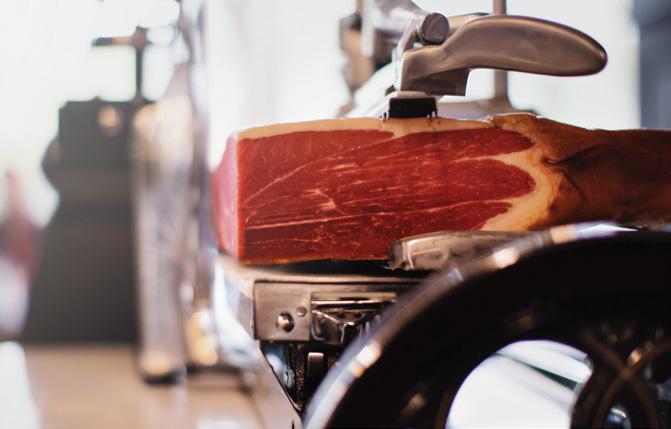
Scan here to see Brice’s range of slicers, dicers and peelers.
THEY’RE EASY TO USE Whether your kitchen is staffed by veterans or kitchen newcomers, you need to ensure everyone is confident with the equipment. Slicers and dicers make this easy by being incredibly simple and safe to use, with little user training involved. As an added bonus, they’re easy to wash after use, too.
Pristine’s Premium Plus paper-towel range uses an innovative solution to provide extra softness and absorption.
SOMETIMES THE BEST FORM of technology is the simplest – and nowhere is that truer than with hand-drying solutions.
While electric hand-dryers have become more advanced in recent years, research from the American Society for Microbiology suggests that traditional paper towels are still holding their own in the drying stakes. In fact, this handy washroom essential has shown to be potentially more hygienic and effective than electric solutions, and to give a quicker dry.
But while long tried and tested, it would be a mistake to think paper towels haven’t also advanced over time. In fact, in the shape of the Through-Air-Dried (TAD) technology you’ll find in Pristine’s Premium Plus range – available in Slimline, Ultra Slim, Compact and Optimum – you will be able to offer customers and staff greater softness and extra absorbency. This innovative solution employs a unique,
dimpled texture to create absorbency pockets that draw liquid in. As a result, TAD towels provide up to twice the bulk and absorption capacity for the same basis weight, and require less storage space than towels of the same weight. Importantly, this leads to a reduction in waste as fewer towels are needed, providing a cost-saving benefit for businesses, and leading to a tidier washroom – important for any facility used primarily by customers.
The Premium Plus hand towels are also Forest Stewardship Council (FSC-C117930) certified and promote environmentally appropriate, socially beneficial, and economically viable management of the world’s forests.
Pristine offers two large, well-designed towel dispensers to accommodate the four different sizes of the Premium Plus range, making it, all in all, a perfect solution for any high-traffic washroom.


 BY WORKING WITH EACH OTHER, BUSINESSES AND ORGANISATIONS HAVE THE CAPACITY TO MAKE SMALL STEPS, AND EVENTUALLY BIG LEAPS, TOWARDS THE UN’S SUSTAINABLE DEVELOPMENT GOALS.
BY WORKING WITH EACH OTHER, BUSINESSES AND ORGANISATIONS HAVE THE CAPACITY TO MAKE SMALL STEPS, AND EVENTUALLY BIG LEAPS, TOWARDS THE UN’S SUSTAINABLE DEVELOPMENT GOALS.
In 2015, the United Nations published the 17 Sustainable Development Goals (SDGs) to serve as a blueprint for “peace and prosperity … now and into the future”.
The goals were designed as practical steps to be carried out by 2030, and include such objectives as ending world hunger and achieving food security (Goal 2), ensuring sustainable consumption (Goal 12), and increasing partnerships between businesses, organisations and governments to help strengthen the means of implementation (Goal 17).
Climate change was also an imperative consideration when creating these SDGs, with calls to take urgent action to combat climate change (Goal 13) and conserve and sustainably use oceans, seas and marine resources (Goal 14).
Seven years on from publication, the 17 goals are as important as ever. For example, when it comes to combating global hunger, statistics suggest not much has changed since 2015, with almost 10% of the world’s population still unable to source enough food to eat.
There’s no doubt this is a challenging picture, and one that may seem so wide-ranging and global in its scope that it’s hard to fathom.But if the SDGs teach us anything, it’s that we can all play a part in trying to achieve these goals.
For businesses in hospitality, that could mean something as simple as reducing food waste.
>


















In Australia, we annually waste about 312kg of food per person, accounting for approximately 3% of the country’s carbon emissions. While households are the biggest culprits, eateries of all kind account for about 250,000 tonnes of that waste, too.

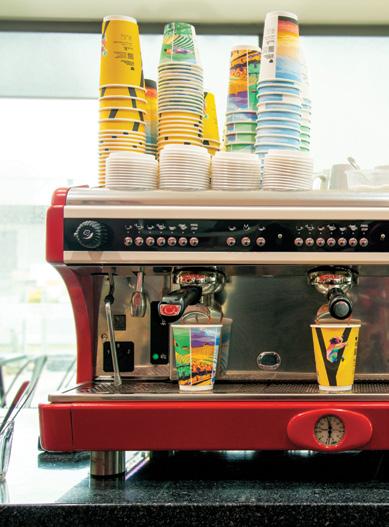
A few simple changes that can help to bring that number down include donating leftover food to not-for-profit organisations, and planning your menu based on popular dishes, while leaving off more speciality dishes that are seldom ordered. You can also keep portion sizes to a sensible limit rather than serving so much that food is bound to be left over. When it comes to sustainable consumption, there are, again, small steps your business can take that will help benefit the world at large. For example, retailers and suppliers can look to reduce the impact their packaging may have on the environment. That means reducing packaging down to only what’s necessary by cutting out any avoidable materials, reusing and recycling where possible, and opting for sustainably sourced materials. But possibly the biggest change companies and
organisations can make is to collaborate with others to make an impact. According to a report by Stillwater and ACNielsen, 94% of New Zealanders believe it is a good idea for companies to support charities. The 2021 Conscious Consumer Report also showed that 62% of Australians surveyed say they want to buy their products and services from companies doing some good.
Bunzl has also long recognised the need to partner with charities, whether local, national
“In Australia, we annually waste about 312kg of food per person, accounting for approximately 3% of the country’s carbon emissions.”
or international in their scope. One of these partnerships has been with OzHarvest, which hasledtoanumberofmeaningfulprogramsto helpreducefoodwasteandassistAustraliansto gainaccesstofood.

Scan here
to view Sustain's range

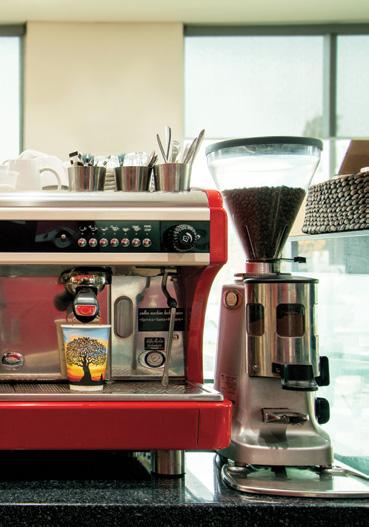
RANGING FROM PREVENTION TO LANDFILL, THE WASTE HIERARCHY GIVES BUSINESSES AND INDUSTRIES CLEAR GUIDELINES FOR REDUCING WASTE.

In March this year, the selling, supplying or distribution of expanded polystyrene cups, bowls, plates and clamshell containers was officially banned in South Australia.
This move was built on legislation introduced in 2021 – the first of its kind in the country – which prohibited the sale or use of certain single-use plastics in the state. Since then, several states and territories have committed to phasing out single-use plastics over the coming years, with the ACT, Queensland, NSW and WA having already outlawed the sale and distribution of certain products.

Last year, New Zealand also announced it would ban some single-use plastics by 2025. All of which signals a new phase for the two countries in the fight to dramatically reduce waste. In particular, how this widespread single-use plastics ban will prevent the creation of certain types of waste in the first place.
This ties neatly into the waste hierarchy – a theoretical model for reducing waste and using resources efficiently which can be applied across multiple industries. In short, the hierarchy is a quick reference guide for businesses and industry leaders, and is organised according to what waste-management option is best for the environment. Unsurprisingly, the prevention or reduction of waste sits at the top of the hierarchy as the best-practice solution, while throwing waste into landfill, considered the worst option, resides at the bottom. >
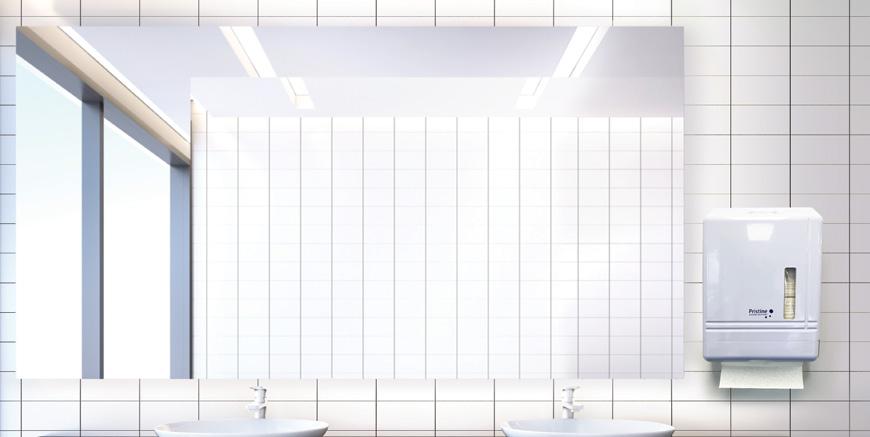
Recyclable packaging must be preferred over compostable packaging options, due to its lower environmental impact
And packaging is one area where the waste hierarchy is especially relevant for all businesses, regardless of the industry.
As an example of preventing waste, companies should seek to avoid using any unnecessary materials in their packaging, and try to reduce existing packaging where possible. For instance, if your business uses packaging, you can ask yourself questions such as, “Could a thinner or lighter material be used instead?” And “Can any components be cut out?”
If prevention or heavy reduction aren’t viable, the next best option is to use packaging or containers that are reusable and refillable to preserve the value of the packaging material.
After this, according to the hierarchy, using recycled – and recyclable – materials for your packaging is preferable and helps to build a circular economy. This means opting for recyclable cardboard to package food products or including recyclable rPET (recycled polyethylene) plastics for cold cups, drink bottles and lunch bags .
No matter what industry you are in, recycled and recyclable packaging helps to conserve resources, and in most cases will serve the same function as packaging made from virgin materials. All in all, you should look to use post-consumer recycled material and postindustrial recycled material over reworked and virgin materials, though this is not always possible.
here to learn more about the single use plastics bans in Australia & New Zealand
The next preferred step down on the hierarchy is to make packaging from renewable sources – in particular, using materials that are Forest Stewardship Council or Programme for the Endorsement of Forest certified. And then, if the packaging is compostable and sent to composting facilities, that is an improvement on the bottom rung of the hierarchy: sending waste to landfill.
As more companies examine their wastemanagement strategies, Bunzl is committed to avoiding products with unnecessary or excessive packaging. The hope is that the hierarchy will spur more businesses to take action, as well as providing a solid set of crossindustry guidelines.

Craft beers are nothing if not diverse: from the huge range of flavours to the interesting, often quirky, venues where they’re being served on tap.
But for all that variety, they do have one thing in common – craft beers are getting more popular by the year.
Over the past two years, total craft beer revenue in Australia has grown by 17.7% and is now worth more than $800 million. It’s a similar story across the Tasman, where the industry has grown exponentially over a number of years, leading to the founding of more New Zealand craft breweries per capita than in the US, the world’s biggest craft beer market.
To make this all the more remarkable, the independent brewing sector has been growing despite interest in largevolume beer brands falling in both Australia and New Zealand.
In Australia, beer consumption per capita has dropped by about 20% over the past decade, while in New Zealand – where tastes have not changed so dramatically – beer volume was still down 1.7% in 2020 from the previous year. This has been mainly credited to a younger, urban demographic, attracted by craft breweries’ independence from major brewers (in most cases, at least), the breweries’ localised settings.
number of female-founded breweries, including Melbourne’s Two Birds Brewing and Beer Baroness in Christchurch.
It’s also, of course, down to the sheer variety of beers and tastes available, with many craft brewers launching solid rosters of intriguing and exotic flavours to stand alongside more traditional options, such as IPAs, pale ales and lagers. This concentration of peculiar flavours, often offered as limited-edition brews, has only boosted the popularity of craft beer, with small-batch brewers able to be versatile and daring in a way that larger brewers can’t.
How the beer is served is also part of the appeal: one study showed that the shape of the glass can influence customer expectations regarding different craft beers. So craft brewers who use expected combinations of beer glasses will deliver a better customer experience.
Scan here to see Arcoroc’s range of beer glasses.
Another important aspect to consider when purchasing glassware is the width of the rim. The glass rim can change the way a customer enjoys a drink. Wide rims will create a heavier flow when drinking and, if holding a beer or wine, will allow the beverage to aerate when sitting. Narrow rims slow this process down and can also help prevent drinks from going flat.
Women are also driving the interest in craft beer, not only as avid craft-beer drinkers, but as brewers, too. A 2019 University of Victoria study found that about 30% of craft-beer drinkers are women, while there’s an increasing
With versatility and innovation, the future of the craft beer industry looks rosy. Though it’s unlikely that such exotic flavours as mussel and oyster beer is going to cross into the mainstream any time soon.
THE POPULARITY OF CRAFT BEER CONTINUES TO GROW EVEN AS INTEREST IN MAINSTREAM BREWS ARE WANING –AND ECCENTRIC, LIMITED-EDITION FLAVOURS ARE ONLY PART OF THE REASON.
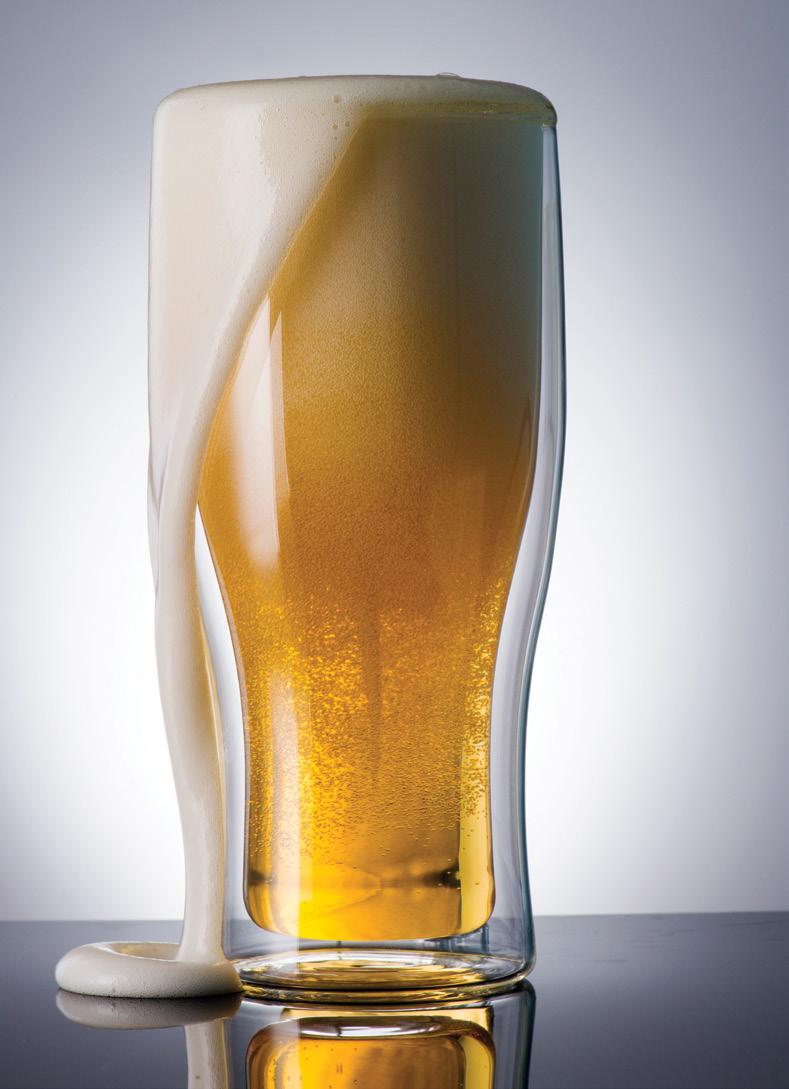
WITH THE CLEANING INDUSTRY GOING THROUGH MANY CHANGES SINCE THE PANDEMIC, INTRODUCING ROBOTICS INTO THE MIX CAN HELP WITH EVERYTHING FROM STAFF SHORTAGES TO SUSTAINABILITY.
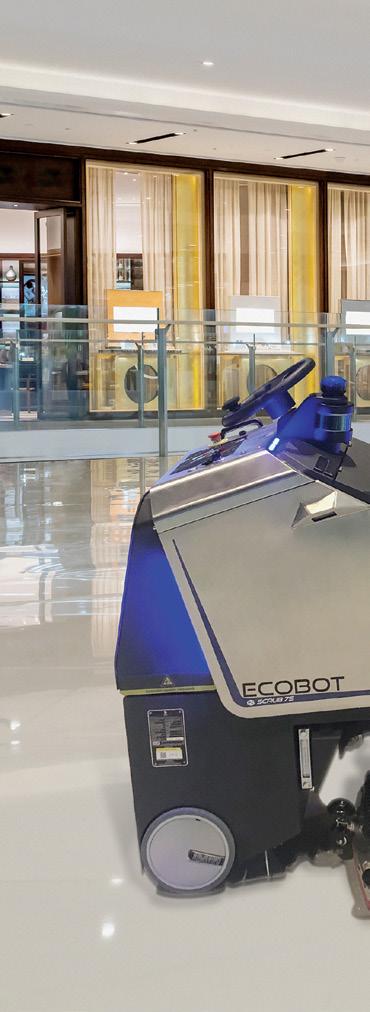
What was once the staple of old sci-fi movies is fast becoming the simple truth: robots are on the rise. OK, so the reality may not be as dramatic as the screen version, but the fact remains: businesses across the world, including many in Australia and New Zealand, are investing heavily in mechanised technology.
South Korea leads the way in global uptake, with 631 robots per 10,000 workers employed across various industries, while China, the US, Japan and Germany are the next biggest international investors. And whether they’re performing repetitive tasks in factories, handling goods in warehouses or navigating mine shafts, in each of the sectors in which they’re becoming ever-more prominent, automated systems are having an impact.
Increasingly, this is the case in the cleaning and hygiene industry, where the gradual introduction of robots is promising a big shift in the way services are performed. Self-driving floor scrubbers, vacuums and sweepers, in particular, have been used to augment the work done by humans, providing a more thorough clean, and increasing the scale of the working areas. “With these new robots, we can do those same jobs on a greater scale while re-deploying that initial labour output to other value-add tasks for our clients,” says Bunzl Australia’s Sales Manager, Facilities Management sector, Greg Crisp. >
Cleaning ecobots are a smart solution for increasing the scale of working areas.
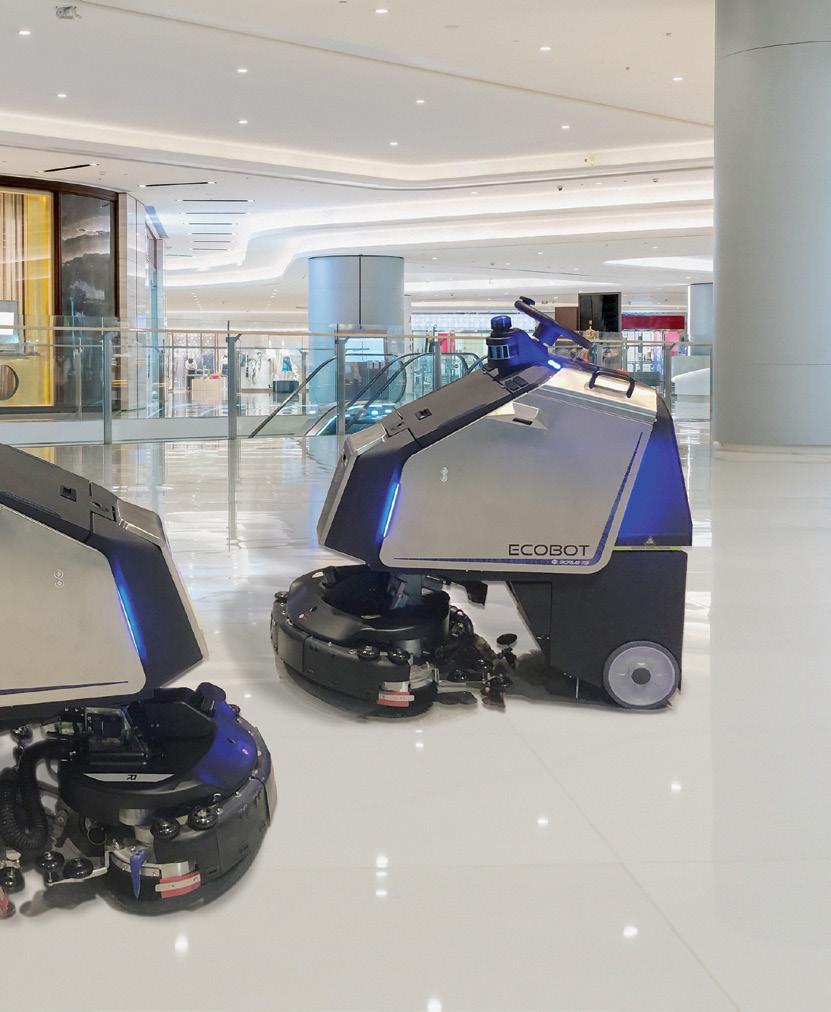





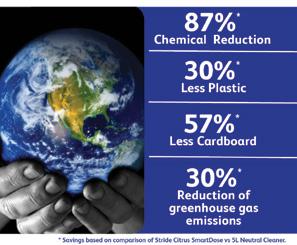
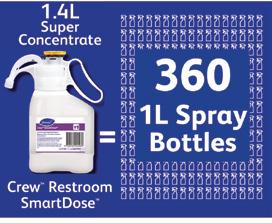











The pandemic impacted the cleaning sector in multiple ways. It increased the demand for greater hygiene – and therefore more intensive work – in facilities that handle high levels of foot traffic. However, on the other side of that, many companies were forced to lose staff and therefore unable to meet the workload.
It also highlighted issues of safety for cleaners, particularly around their potential exposure to germheavy areas.
These matters have been brought into even greater relief over the past 12 months. Cleaning standards are higher than ever, while the workforce is still shy on numbers and subject to significant churn. In large areas such as airports, hospitals, hotels and shopping centres, that can mean a lot of pressure for workers to regularly produce standards of cleanliness that may not always be possible.
Automated technologies are providing solutions to these problems by being able to complete challenging cleaning work safely and efficiently.
Contact one of our Cleaning & Hygiene Advisory Teams for more details: chat@bunzl.com.au
A clear advantage of using robotic technology is that you can accurately measure and evaluate the work completed by a machine, giving you invaluable information when it comes to cleaning procedures and extra maintenance that may be required
in high-traffic areas. As an example, you will be able to see the time it takes for a floor scrubber to clean the entire floor of a shopping centre, while also being able to track the surface area covered, the amount of water used and the overall level of efficiency. “Take a machine like the Gaussian scrubber, which has a multi-stage water filtration system, which removes the need to empty and refill tanks of dirty water during cleaning – and creates an uninterrupted cleaning cycle,” says Crisp.
As well as aiding with staff shortages and increasing productivity, robots also help to make cleaning work more sustainable. And that is a rise we can all get on board with.
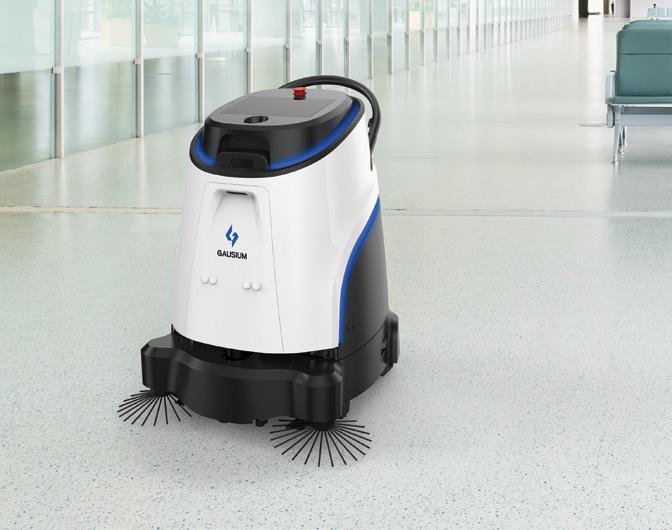
“The benefit of robotics in cleaning include the removal of labour [and] the fact that a greater cleaning consistency can be achieved.”
As one of the many after-effects of the pandemic, venues and facilities are being held to higher-than-ever standards of hygiene.
New cleaning guidelines have been introduced across the board in the wake of heightened fears and risks of contamination that were thrown up by the spread of COVID-19. While understandable, the new policies have hit the commercial cleaning industry at one of the worst possible times.
The pandemic has had a large additional knock-on effect on the revenue and staffing levels of cleaning companies, with the strain of worker shortages, alongside necessary extra
cleaning, currently hitting healthcare, hospitality and other industries the hardest. The result is that existing cleaners are being tasked with more work, while new workers are unfamiliar with hygiene requirements and policies, and are therefore more liable to make mistakes.

One thing’s for certain: whether operating in healthcare, hospitality, educational facilities or entertainment venues, pre-COVID cleaning approaches are now more rigorous and enhanced.
Having to know complicated procedures, such as how and when to perform cleaning audits, or even which products to use and in what volumes for particular jobs, only increases the risk of errors being made by inexperienced or overworked
AS VENUES DEMAND MORE OF CLEANERS IN THE WAKE OF THE PANDEMIC, EFFICIENT SOLUTIONS ARE KEY TO SUPPORTING WORKERS.
staff. When this is applied to outsized venues, such as sports stadiums or large hotels, it’s clear that the process becomes quickly unsustainable.
Finding clever solutions that are both simple and effective is a simple way to help ease the burden on cleaning staff.
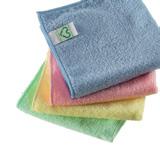

A dosing pump is an innovative cleaning solution, and provides an intelligent way for cleaners, trained or not, to easily measure the correct amount of super-concentrate daily cleaner or disinfectant needed without call for a connected water supply.
helps companies reduce costs on cleaning fluids by eliminating overmixing, and saves staff time by bypassing the need for precise manual measurement of cleaning products.
Diversey’s SmartDose uses a safetyfirst, closed-system design, which sports easy-to-follow icons to make it simple for anyone to use.
Scan here to view Diversey’s range of smart and efficient cleaning solutions.
By adopting dosing pumps, cleaners can vary the amount of cleaning liquid to pre-determined, precise dilution rates, making the resulting mix of water and detergent ideal for the job, whether spray or bucket cleaning or scrubbing. Using dosing tools in larger venues
In line with Diversey’s sustainability values, SmartDose is made with less packaging and fewer transport costs, and is recyclable once it’s been used.
So if you’re looking for smart solutions to staff shortages or for members of the workforce who aren’t yet fully trained, a device like SmartDose could be key to ensuring the cleaning work still meets rigorous guidelines to meet high standards ofhygiene.
Fresh Seafood Bags are the ideal way to package and present your seafood. Sized to accommodate most fish, prawns, scallops, calamari, crab and crayfish. Order now.

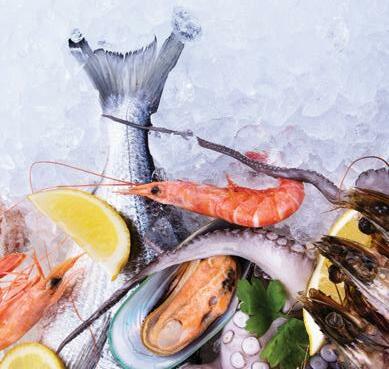
“Finding clever solutions that are both simple and effective is an easy way to help ease the burden on cleaning staff.”
Long, thin, curved, scalloped: butchers’ knives are a specialist piece of equipment – and every knife has been refined and tailored to perfectly suit the job at hand.
So while a cimetar steak knife might more resemble a samurai’s blade, and a boning knife may taper awkwardly upwards at the tip, it is all for a good purpose.
Here are four reasons you need the right knives for the job.
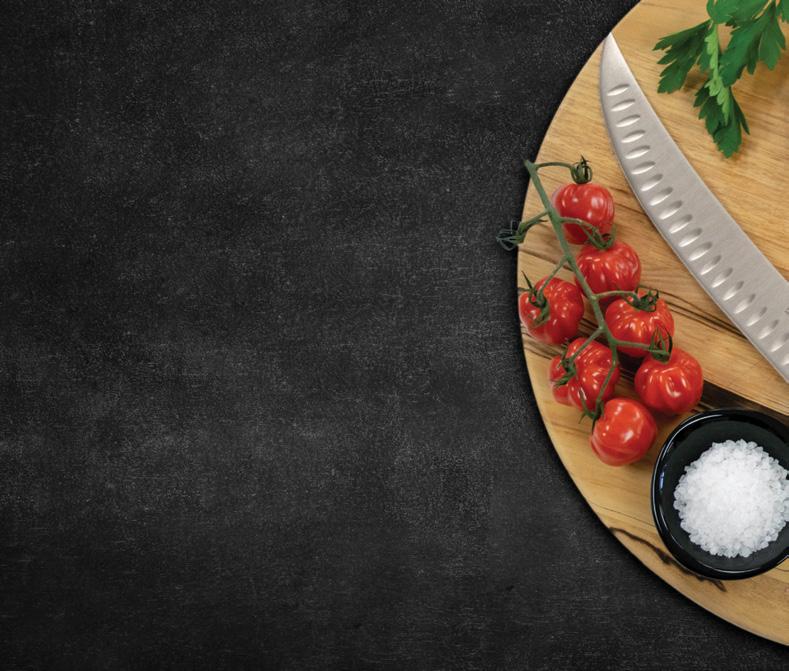
Butchering meat is a labour-intensive job –and without the right tools, you’ll be exhausted before you’re anywhere near finished cutting. To break down meat into smaller parts, you’ll need something like a cimetar knife. Thanks to its long, stiff, curved blade, this knife is perfect for producing retail cuts like schnitzels and steaks. Fluting on the blade gives an even cleaner slice.
A butcher’s knife is, by definition, sharp. Very sharp. And, though it might seem counterintuitive, a sharper blade will actually make your job safer, thanks to the relative ease with which you’ll be able to tackle a piece of meat. Using a dull knife, on the other hand, will cause you to use extra force when cutting, which can send you off balance and easily lead to accidents.
Butchery is an art form, and for that you need to use knives that have been designed for the job. A boning knife, for instance, will allow you to remove flesh from bones cleanly thanks to its slimmer design and sturdy weight – perfect for processing primal cuts and producing retail cuts with precision. Avoiding tearing messily through meat, as is more likely with a larger knife, will also help you reduce wastage.


Regular chefs’ knives are not designed to cut through thick pieces of meat and bone – trying to do so will prove to be a laborious and dangerous endeavour. Using the right knife can cut down on prep time and create a more efficient kitchen. With a robust butchers’ knife, you could even slice frozen meat without defrosting it first. Many knives in a butcher’s armoury also serve cross-purposes: a boning knife can also be used to skin or trim, for instance, while a skinning knife will easily handle the gutting of an animal or fish thanks to its blunt tip.

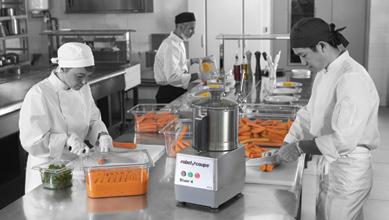

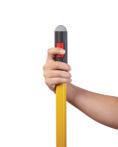
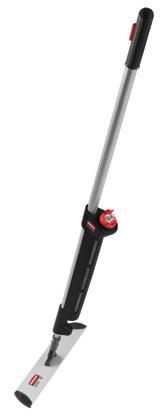

AS WITH MOST THINGS IN LIFE, THE HUMBLE GROCERY BAG HAS UNDERGONE MANY A TRANSFORMATION, ONLY TO RETURN BACK TO ITS RELATIVE ORIGINS: THE PAPER BAG, AS BUSINESSES TRANSITION OUT OF SINGLE-USE PLASTICS.
The 1960s and ’70s will forever be remembered as a time of momentous societal change. But it was a relatively small change – an innovation designed to make the lives of consumers easier – that had arguably one of the furthestreaching impacts.

In 1965, Swedish company Celloplast patented the first one-piece polyethylene shopping bag, with a design that has remained much the same since. By the end of the next decade, these shopping bags had spread all over the world, including Australia and New Zealand, replacing at a stroke the traditional brown paper grocery bags that had been used since the turn of the 20th century.
Fast forward another 40 years and, in light of the oversized impact single-use plastic bags have had on the environment, major supermarkets have since called time on distributing them. But with consumer demand still high for shopping bags,
stores have performed a remarkable U-turn and returned to the receptacle that had given way to plastic all those years before: the brown paper bag.
It marks another fascinating point in the history of these simple-looking items, which primarily originated in the US in the mid-19th century.
Recognising their capacity to convey numerous items, an American priest named Francis Wolle invented the first machine to mass-produce paper bags, though Wolle’s versions were more akin to large envelopes as opposed to the carriers we know and recognise today.
Because of this, they were not especially practical; a point noted by female inventor Margaret E. Knight. With great difficulty, owing to her status as a woman in male-dominated society in the 19th century, she patented a machine to produce far more effective square-bottomed bags in the 1870s. Soon, these bags were being used for grocery shopping by consumers across the >
US, but it would take one more improvement before they would assume the shape we are most familiar with today.
This was down to another American, Charles Stillwell, who added side pleats to the bag in the early 1900s, making them easier to fold and store. This design quickly became known as an SOS – or a self-opening sack – and was soon the most common variety of paper bag, eventually spreading throughout the world.
With this spread came improvements in how to strengthen the bags, with the dominant material for most of their history being Kraft paper: a material created, just as with standard

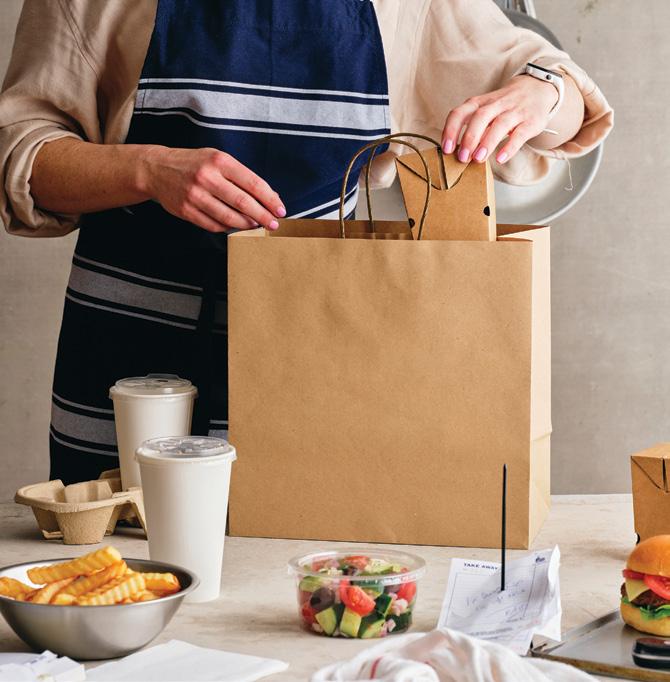
paper, when wood chips undergo a particular chemical process that turns them into pulp. The composition of the resulting material, and the fact that it’s not bleached like other forms of paper, render it stronger and more durable.
Now, with many paper bags rightfully being produced using Forest Stewardship Councilcertified renewable sources (an international non-governmental organisation dedicated to promoting responsible management of the world’s forests), they can also be reused, recycled and composted – making them the perfect century-old solution to a modern-day. problem.
“With consumer demand still high for shopping bags, stores have performed a remarkable U-turn and returned to the receptacle that had given way to plastic all those years before: the brown paper bag.”Scan here to view Detpak’s Carry Bag range of sustainable packaging products.
Touchless Dispensing Systems are taking over washrooms around Australia.
So find the perfect fit for your business with ICON jamfree technology.
Kimberly-Clark Professional has launched its ICON dispenser collection in Australia. This innovative washroom solution offers ultra-hygienic touch-free functionality that gives the user supreme confidence over cleanliness every time.

The ICON portfolio showcases three dispensers: one for paper towels, one for toilet tissue and one for skincare products such as soap and sanitiser.

As we all know, attitudes towards hygiene and handwashing have shifted dramatically in the wake of the global pandemic, with a Kimberly-Clark Professional survey1 showing washroom users2 in Australia have new expectations and standards of cleanliness than pre-pandemic. Importantly, the survey reveals:
• 63% of public washroom users believe confidence in hygiene requires more than just the appearance of a clean facility.
• Nearly 50% of users surveyed indicated that touchless amenities such as touchless soap dispensers, touchless disposable paper-towel dispensers and automatic doors give them confidence that the washroom facility is clean and hygienic.
• Nearly 50% of decision-makers of products in facilities expect publicwashroom hygiene to improve over the next 12 months.
Proof that now more than ever, washroom users need absolute reassurance that their hygiene, safety, and health are a top priority.
“Backed by teams of hygiene and innovation experts, the launch of the
dispensers demonstrates our commitment to delivering unmatchable confidence in the washroom,” says Nicole Wu, vice-president of Asia-Pacific, Kimberly-Clark Professional.
“As higher expectations of cleanliness become a lasting benchmark, we want to be a trusted provider of game-changing hygiene for the well-being and safety of all users and decision-makers.
“The ICON collection offers a new standard, with a ‘touchless’ experience an imperative part of the washroom.”
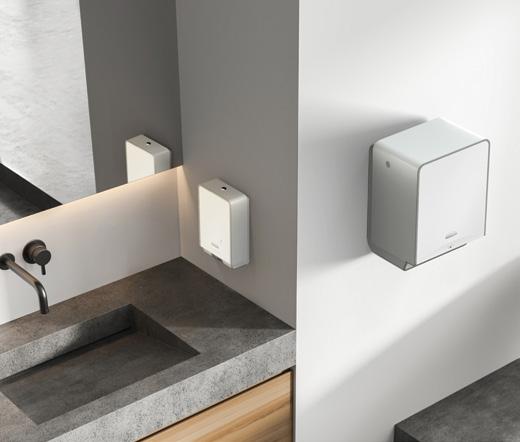
1 The research was commissioned by Kimberly-Clark Professional. It surveyed 403 washroom end-users and 152 choosers of restroom/hygiene and/or wiping products across Australia. The research was carried out in January 2022.
2 Based on Kimberly-Clark Professional lab testing.
Ronni Kahn AO, founder and CEO of OzHarvest, is a passionate champion of food sustainability –and she wants to spread the word.
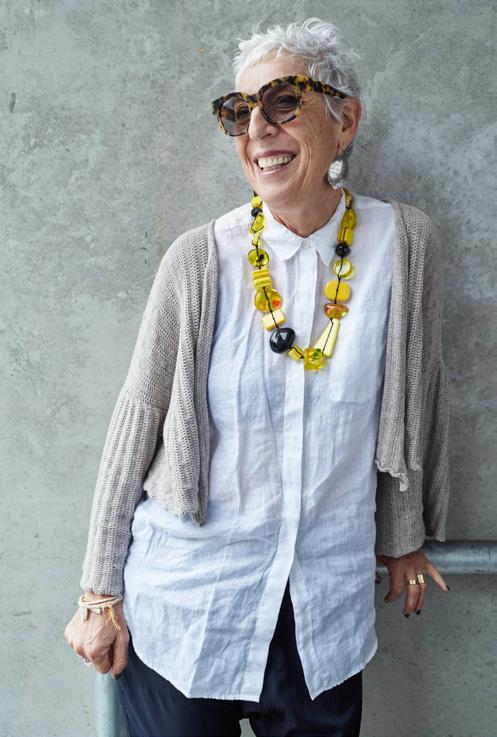 Photography Anthony Geernaert
Photography Anthony Geernaert
The word “passion” gets thrown around a lot, so much so that its meaning has become diluted. But if you’re searching for someone to restore that meaning, look no further than OzHarvest founder, Ronni Kahn AO. Passionate is her natural and authentic state. That enthusiasm is what provides the momentum to continue her fight against food waste, working towards a more sustainable future, as well as fueling her commitment to feed disadvantaged people across the country.
Sustainability has always been a part of the OzHarvest mission, but Kahn has recently focused efforts on raising awareness about the impact of food waste on our planet. “OzHarvest was born from a sustainability issue without me even knowing it was a thing,” explains Kahn, who founded the food rescue organisation in 2004 after seeing huge quantities of leftovers go to waste in her events company. “I had no idea about the environmental impact of food waste. I just saw a problem and decided to fix it.”
Eighteen years later, the issue of climate change has become a priority for governments, businesses and individuals alike. And it’s no small one. The Department of Climate Change, Energy, the Environment and Water reports that Australia uses about 2600 gigalitres of water to grow food that is wasted, with the amount of land used to grow wasted food covering an area larger than Victoria.
“OzHarvest is committed to the national target of halving food waste by 2030, and we’ll
do whatever we can to empower others to do the same,” Kahn says. “Businesses are looking for ways to address the UN Sustainable Development Goals. Supporting our work is a great first step, but they should also review what they have within their power to change.”
So where to begin? Kahn concedes it’s a problem that can seem daunting at first. Instead of thinking it must be solved in one hit, she suggests focusing on what your business can do that could make a difference. Sometimes going for the low-hanging fruit can be a good place to start. It could be implementing a recycling
program or rethinking the kind of equipment you purchase. But the most important aspect of any sustainability initiative, she says, is to avoid a box-ticking mindset. “It’s important to be committed to really embedding sustainability in all sense of the word. Believe in it. Get your team involved. Ask your customers what they are passionate about and then find a cause or purpose that aligns.”
According to Kahn, the best results come when the entire team is invested in a common goal and can see the impact they’re helping to make. And that belief must come from the top. “As a business leader, always walk the talk, roll your sleeves up and lead by example. You cannot fake genuine care and commitment, so being real and showing vulnerability builds trust. I believe authentic leadership enables me and my team to bring their whole selves to work.”
But doesn’t she ever get overwhelmed by the scale of the challenge? “Remaining passionate, resilient and committed comes naturally to me. There’s still so much work to do but I know that many solutions are in our reach. There is so much doom and gloom around the planet’s future. I prefer to tell the good news and say, ‘Come on everyone, we can do this!’”
Her team play a crucial role in maintaining that passion and resilience. “I’m surrounded by incredible, hard-working people who are all connected to our cause – from my 300-strong team to our 4000 volunteers. We all support each other, and on those tough days, there’s always someone to lean on.”
And her final advice for leaders looking to shift toward a more sustainable way? “When people ask me how I started I always say: ‘There’s no time like now. Just get on with it and do something.’ Imagine if every person and every business did just one thing to be more aware of our surroundings – the impact would be huge!”
QUICK-FIRE Q&A
Vanessa tells us about her role as a Product Category Manager, where she sees the product’s journey through from start to finish.

I studied accounting at university and decided to head down that path in the beginning of my career. However, when
I came to Bunzl, I was fortunate enough to work for some great leaders who took a chance and gave me opportunities that I might otherwise not have had. All of that is what brought me to my current role as a Product Category Manager. I work across product sourcing, quality control, product launches, data projects, and with our strategic suppliers and the sales team to find solutions for our customers.
What do you appreciate most about your role?
The team, and all of the behind-the-scenes hard work that it takes to make a product come to life. It’s never a one-person job.
What are some of the most important considerations when it comes to new products?
Quality is obviously key, as it is important that our customers (and their customers) have a safe and positive experience. In addition, we have to balance function and sustainable design considerations. What’s one of the major highlights of your career?
In 2020, I was managing the medical masks, disposable gloves and PPE categories at Bunzl. In the midst of the severe global shortage caused by the pandemic, I had to fight days, nights and weekends to source, negotiate and deliver essential PPE products to our customers. I had to figure out new ways to maintain quality supply continuity for our existing customers, as well as support the business in supplying some of our largest government healthcare contracts.
I’m not sure if highlight is the right word, as it was such a devastating time for business and people around the world, but it was definitely a moment in my career where I felt I made a real difference for our customers.
Have you noticed any emerging trends in your industry that you’re particularly excited about?
The focus on sustainability in the past few years has been particularly inspiring. Hospitality is an area that is undergoing a huge amount of change and upheaval with things like the national single-use plastic ban and the larger investment we’re now putting into renewable materials.
“There’s still so much work to do but I know that many solutions are in our reach.
I prefer to tell the good news and say, ‘Come on everyone, we can do this!’”
Solutions
SUSSWOZHC04
SUSSWOZHC06
SUSSWOZHC08
SUSSWOZHC08W
SUSSWOZHC12
SUSSWOZHC16
SUSDWOZHC08
SUSDWOZHC08W
SUSDWOZHC12
SUSDWOZHC16
SUSHCL4
Single Wall Hot Cup Paper/Water-Based Barrier Coating, OzHarvest Collection 4oz CTN/2000
Single Wall Hot Cup Paper/Water-Based Barrier Coating, OzHarvest Collection 6oz CTN/1000
Single Wall Hot Cup Paper/Water-Based Barrier Coating, OzHarvest Collection 8oz CTN/1000
Single Wall Hot Cup Paper/Water-Based Barrier Coating, OzHarvest Collection 8oz Wide CTN/1000
Single Wall Hot Cup Paper/Water-Based Barrier Coating, OzHarvest Collection 12oz CTN/1000
Single Wall Hot Cup Paper/Water-Based Barrier Coating, OzHarvest Collection 16oz CTN/1000
Double Wall Hot Cup Paper/Water-Based Barrier Coating, OzHarvest Collection 8oz CTN/500
Double Wall Hot Cup Paper/Water-Based Barrier Coating, OzHarvest Collection 8oz Wide CTN/500
Double Wall Hot Cup Paper/Water-Based Barrier Coating, OzHarvest Collection 12oz CTN/500
Double Wall Hot Cup Paper/Water-Based Barrier Coating, OzHarvest Collection 16oz CTN/500
Fits 12/16oz & 8oz Wide CTN/1000
SUSHCLP12/16